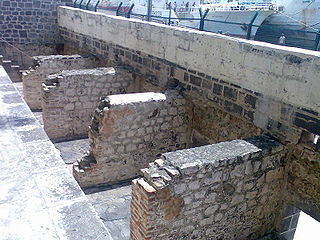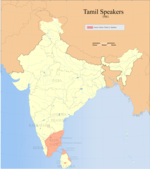
Mauritian society incorporates several ethnic and multi-ethnic groups. A majority of the republic's residents are descendants of people from India. Mauritius also comprises migrants from continental Africa, China, France, and the East African island of Madagascar. As of 2023, Mauritius now has the highest population density in Africa.
Mauritius is a multi-ethnic, multilingual and a plural society with a population composed mainly of four major ethnic and religious groups. It is often depicted as a "rainbow nation".

Islam in Mauritius is the nation's third largest religion behind Hinduism and Christianity. Muslims constitute over 17.3 per cent of Mauritius population. Muslims of Mauritius are mostly of Indian descent. Large numbers of Muslims arrived in Mauritius during the British regime, starting in 1834 as part of the large-scale indentured labor force from India.

Hinduism came to Mauritius when Indians were brought as indentured labour to colonial French and later in much larger numbers to British plantations in Mauritius and neighboring islands of the Indian Ocean. The migrants came primarily from what are now the Indian states of Bihar, Uttar Pradesh, Madhya Pradesh, Jharkhand, Maharashtra, Tamil Nadu, Telangana and Andhra Pradesh, with another influx of migrants from the Sindh region of Pakistan, following the Partition of India.

The Tamil diaspora refers to descendants of the Tamil speaking immigrants who emigrated from their native lands in the southern Indian subcontinent to other parts of the world. They are found primarily in Malaysia, Arab states of the Persian Gulf, South Africa, North America, Western Europe, and Singapore. It can be divided into two main diasporic clusters, due to geographical, historical and cultural reasons, as Indian Tamil diaspora and Sri Lankan Tamil diaspora.
Ethnic groups in South Asia are ethnolinguistic groupings within the diverse populations of South Asia, including the countries of Bangladesh, Bhutan, India, Maldives, Nepal, Pakistan, and Sri Lanka. While Afghanistan is variously considered to be a part of both Central Asia and South Asia, Afghans are generally not included among South Asians.
Indo-Mauritians are Mauritians who trace their ethnic ancestry to the Republic of India or other parts of the Indian subcontinent in South Asia.

Mauritians are nationals or natives of the Republic of Mauritius and their descendants. Mauritius is a multi-ethnic society, with notable groups of people of South Asian, Sub-Saharan African, European, and Chinese descent, as well as those of a mixed background from any combination of the aforementioned ethnic groups.
Indians in Réunion are people of Indian origin in Réunion. They form two ethnic groups on the island, Malbars (Tamils) and Zarabes (Muslims).
Indo-Seychellois are inhabitants of Seychelles with Indian heritage. With about 10,000 Indo-Seychellois in a total Seychellois population of nearly 100,000, they constitute a minority ethnic group in Seychelles.

The Immigration Depot is a building complex located in Port Louis on the Indian Ocean island of Mauritius, the first British colony to receive indentured, or contracted, labour workforce from many countries. From 1849 to 1923, half a million Indian indentured labourers passed through the Immigration Depot, to be transported to plantations throughout the British Empire. The large-scale migration of the labourers left an indelible mark on the societies of many former British colonies, with Indians constituting a substantial proportion of their national populations. In Mauritius alone, 68 percent of the current total population is of Indian ancestry. The Immigration Depot has thus become an important reference point in the history and cultural identity of Mauritius.

Caribbean Hindustani is an Indo-Aryan language spoken by Indo-Caribbeans and the Indo-Caribbean diaspora. It is a koiné language mainly based on the Bhojpuri and Awadhi dialects. These Hindustani dialects were the most spoken dialects by the Indians who came as immigrants to the Caribbean from Colonial India as indentured laborers. It is closely related to Fiji Hindi and the Bhojpuri-Hindustani spoken in Mauritius and South Africa.

Fiji Hindi is an Indo-Aryan language spoken by Indo-Fijians. It is an Eastern Hindi and Bihari language, considered to be a koiné language based on Awadhi that has also been subject to considerable influence by Bhojpuri, other Eastern Hindi and Bihari dialects, and Standard Hindi-Urdu. It has also borrowed some vocabulary from English, Fijian, Telugu, Tamil, Bengali, Punjabi, Gujarati, and Malayalam. Many words unique to Fiji Hindi have been created to cater for the new environment that Indo-Fijians now live in. First-generation Indians in Fiji, who used the language as a lingua franca in Fiji, referred to it as Fiji Baat, "Fiji talk". It is closely related to Caribbean Hindustani and the Bhojpuri-Hindustani spoken in Mauritius and South Africa. It is largely mutually intelligible with the languages of Awadhi and Bhojpuri, as well as with the Bihari languages of Bihar, Uttar Pradesh, Jharkhand, Madhesh, Koshi and Lumbini, and the dialects of Eastern Hindi of Uttar Pradesh, Madhya Pradesh, Chhattisgarh and Lumbini, but differs in phonetics and vocabulary with Modern Standard Hindi and Urdu.
The Indian indenture system was a system of indentured servitude, by which more than 1.6 million workers from British India were transported to labour in European colonies, as a substitute for slave labor, following the abolition of the trade in the early 19th century. The system expanded after the abolition of slavery in the British Empire in 1833, in the French colonies in 1848, and in the Dutch Empire in 1863. British Indian indentureship lasted till the 1920s. This resulted in the development of a large South Asian diaspora in the Caribbean, Natal, East Africa, Réunion, Mauritius, Sri Lanka, Malaysia, Myanmar, and Fiji, as well as the growth of Indo-Caribbean, Indo-African, Indo-Mauritian, Indo-Fijian, Indo-Malaysian, and Indo-Singaporean populations.
Bihari Mauritians are the descendants of mainly Bhojpuri speaking migrants to Mauritius. A majority of Indo-Mauritians are of Bihari descent, and the majority of Mauritians are Indo-Mauritian. Castewise, most Bihari Mauritians are Vaishyas with significant Bhumihars, Brahmins, Rajputs, Koeris, Chamars, Yadavs, Kurmis, Banias and Kayasthas. All but one Mauritian Prime Ministers have been of Bihari Vaishya descent. The community includes a Hindu majority with a Muslim minority. About 65.7 % of the 1.3 million population of Mauritius is of Indian origin, most of them from Bihar, with Bhojpuri as their ancestral tongue.
Indo-Martiniquais are an ethnic group of Martinique, compromising approximately 10% of the population of the island. The Indo-Martiniquais are descendants of indentured labourers of the nineteenth century from India of primarily Tamil and Telugu descent as well as other Indian peoples. They are primarily most concentrated in the northern communes of Martinique, where the main plantations are located. The Indo-Martiniquais speak Antillean a French-based creole.

Mauritius was a Crown colony off the southeast coast of Africa. Formerly part of the French colonial empire, British rule in Mauritius was established de facto with the Invasion of Isle de France in November 1810, and de jure by the subsequent Treaty of Paris. British rule ended on 12 March 1968, when Mauritius became independent.
Nowadays, no one could still claim his pure race status. Ethnic, social and linguistic differences become each day more and more present and marked all over the world. Time, history and continuous population intermingling across boundaries led to create cosmopolitan beings, that is to say world citizens who, in spite of their singularity, manage to bring themselves together in order to create a unique and single nation. Among the nations most affected by this cross-fertilization is notably found Mauritius. The social and linguistic diversity of this country makes it unique and contribute to its wealth. It arouses curiosity, urges us to deepen our knowledge on the subject and is, to this extent, worth being studied.

Mauritius is a religiously diverse nation, with Hinduism being the most widely professed faith. According to the 2011 census made by Statistics Mauritius, Hinduism is the major religion at 48.54%, followed by Christianity at 32.71%, followed by Islam 17.30% and Buddhism 0.18% in terms of number of adherents.
Bihari diaspora are the people from Bihar who resides outside of India.











